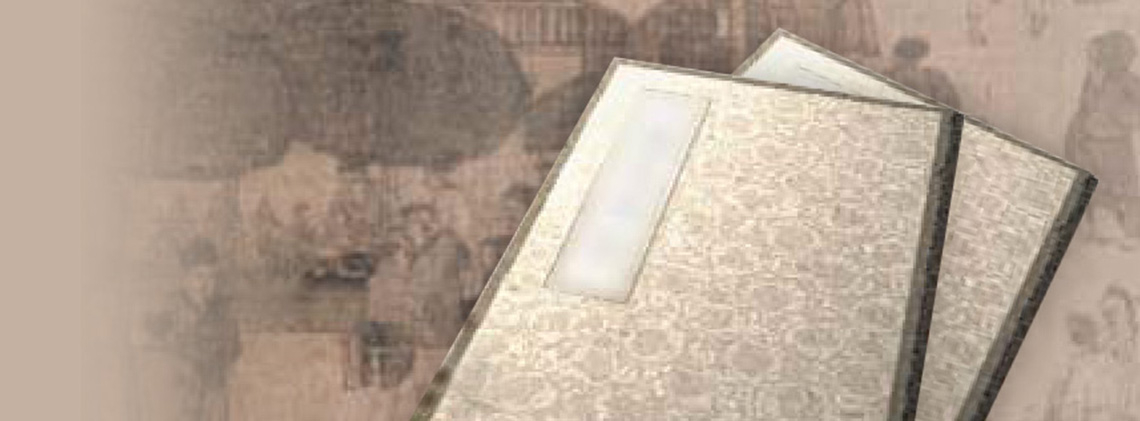
Huaben of Song and Yuan Dynasties
Splendid
Chi Culture
Topic
Huaben of Song and Yuan Dynasties
Huaben (vernacular stories) were master scripts used by storytellers during the Song (960–1279) and Yuan (1271–1368) periods. It is a literary genre derived from prosimetric arts, and is one of their offshoots. Huaben served as a bridge between prosimetric arts and the newly evolving vernacular fiction.
After the mid-Tang (ca. eighth century), there was an increase in the number of residents living in China’s towns and cities. Due to the prosperity brought by a commodity economy in Song times, urban populations grew to a critical mass and popular arts and culture emerged to meet their aesthetic, leisure, and entertaining needs. The huaben of the Song and Yuan periods was born under this historical background. Lower-ranking literati and artists formed small enterprises to produce huaben for popular consumption to earn a living. Private publishing houses and bookstores also competed to print huaben, contributing to the promotion and development of huaben literature. Huaben can be grouped into two categories by genre and script length: scripts of short length, all dealing with fictional subjects, are called xiaoshuo (novellas or short stories), while longer scripts of medium length, mostly dealing with historical subjects, are called pinghua (plainly told stories).
Song and Yuan huaben in the short-length xiaoshuo category can be further divided into three groups by subject matter: love stories, court-case stories, and ghost stories. Love stories play a prominent role in Song and Yuan huaben. Representative works include “Nian yu Guanyin” (Carving the jade Guanyin), “Nao Fanlou duoqing Zhou Shengxian” (Lovesick Zhou Shengxian causing trouble in Fan’s wineshop), and “Zhangsheng cailuan deng zhuan” (Story of Scholar Zhang and the multi-colored simurgh lantern). The characters in these love stories, like Qu Xiuxiu and Zhuo Wenjun, bravely pursue love, marriage, and freedom from social conventions and autocratic rules. Their content is quite broad, and they often touch on all aspects of social life. Although the stories often involve upright, corrupt, or inept officials, the main focus of the narrative is not limited to solving or investigating court cases, but rather they reflect the concerns of ordinary people about irrational phenomena in society, and their deep anxiety about their right to exist and the status of public order in society. Court-case huaben draws its material from criminal cases and civil disputes, but is different from modern detective fiction in significant ways. Two outstanding works of court-case huaben still extant today are “Cuo zhan Cui Ning” (Wrongly beheading Cui Ning) and “Jiantie heshang” (The monk with the love letter). Ghost stories occupy a large part of Song and Yuan huaben. They are largely inherited from earlier traditions of oral storytelling and contain fantastical and superstitious elements. Nonetheless, Ming literati were drawn to collecting them and putting them into written form because they provided fertile material to unleash their imagination and to experiment with new ways of telling old tales. Works like “Hong bai zhizhu” (The red and white spider), “Xihu santa ji” (Account of the three pagodas of West Lake), and “Xishan yi ku gui” (Den of ghosts in the Western Hills) all grew out of earlier oral traditions of ghost tales but now have added literary value. By the Jiajing era (1522–1566) of the Ming dynasty (1368–1644), huaben had fully transitioned from being oral stories told by anonymous entertainers to a written form practiced by talented literati who not only collected and edited old huaben but also wrote new ones. Literary huaben were printed and widely sold in compendiums like the Jingben tongsu xiaoshuo (Capital editions of popular stories) and the Sanyan (Three words). The latter is a collection of short stories compiled by the late Ming scholar Feng Menglong (1574–1646) based on Song and Yuan huaben. They can be regarded as mature vernacular short stories.
The term pinghua first appeared in the Yuan dynasty and refers to the Song and Yuan huaben of medium length comprising of historical stories, mostly drawn from the history of the Three States or the Five Dynasties. Wudai shi pinghua (Plainly told tale from the history of the Five Dynasties), Quanxiang pinghua wuzhong (Five tales told in plain style, fully illustrated), and Dasong xuanhe yishi (Incidents from the Xuanhe era of the Great Song) are all representative works of pinghua-type huaben. Shihua is another sub-group of huaben that deals primarily with Buddhist tales. Da Tang Sanzang qujing shihua (Ballad narrative of Tang Sanzang seeking Buddhist sutras) is the only Song dynasty shihua-type huaben that still exists today. With its longer length and more developed characters and plots, Song and Yuan pinghua-type huaben laid the foundation for the development of later fiction written in the vernacular. We can see pinghua roots in China’s classic full-length novels (xiaoshuo) with chapters and well-developed plots and characters that emerged in the late Ming (ca. mid-seventeenth century) and flourished into the Qing dynasty (1644–1911).
Compared with conventional literature of the past written in classical language, huaben presents a brand new aspect. In form, it emulates the popular prosimetric arts and other oral storytelling conventions by using vernacular language. In content, it not only draws from sources like historical writings, fiction written in classical language, and other literary forms of the past, but also draws materials from urban residents’ daily lives. More importantly, huaben reveal the democratic and progressive tastes and aspirations of the common people who once lived in China’s urban centers.



